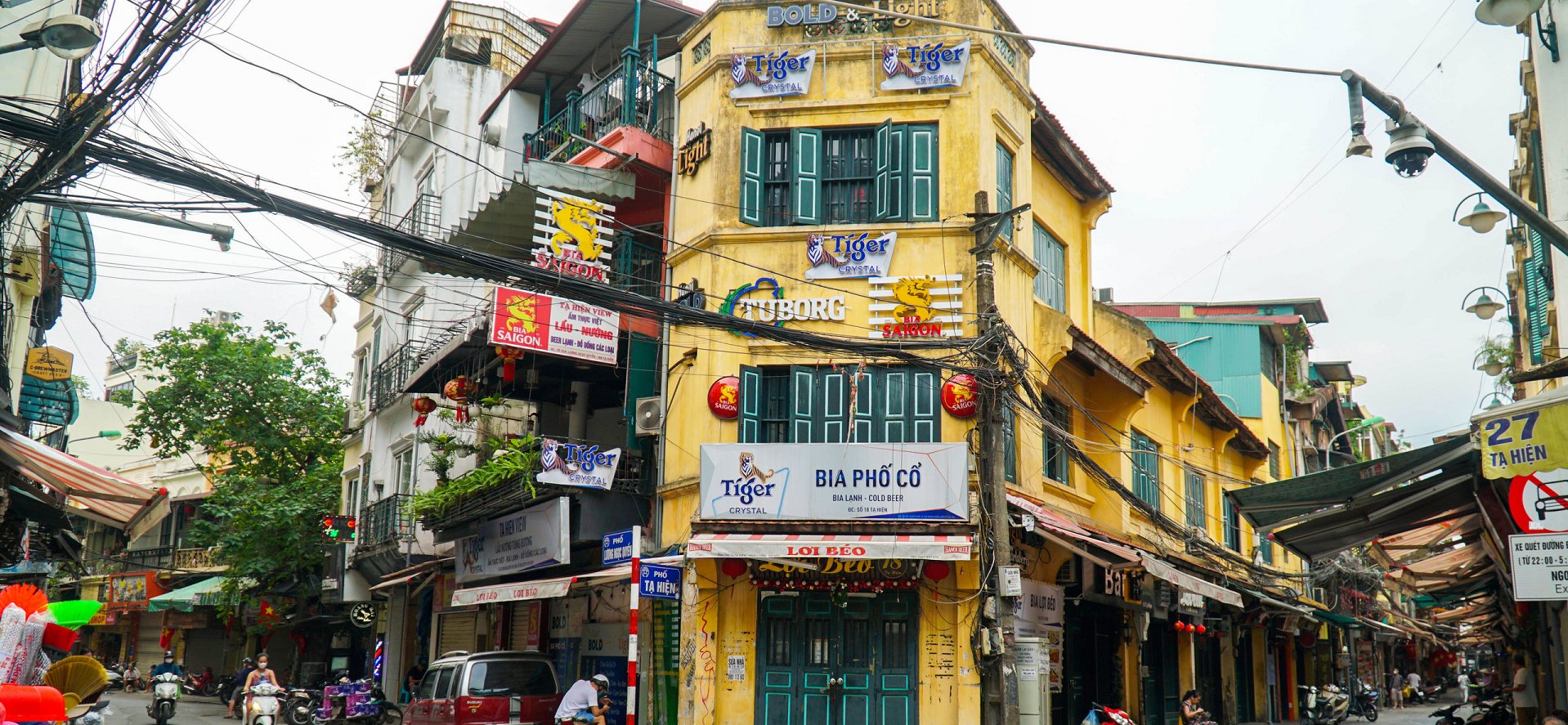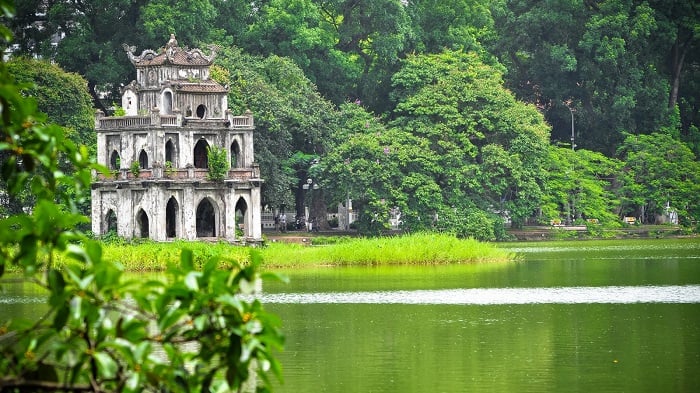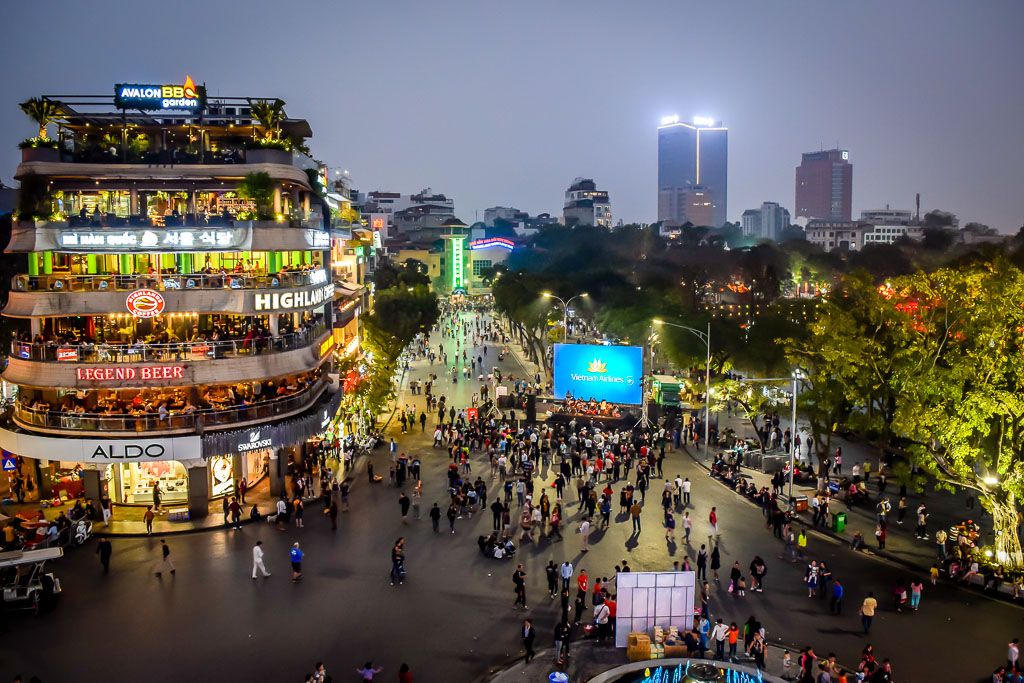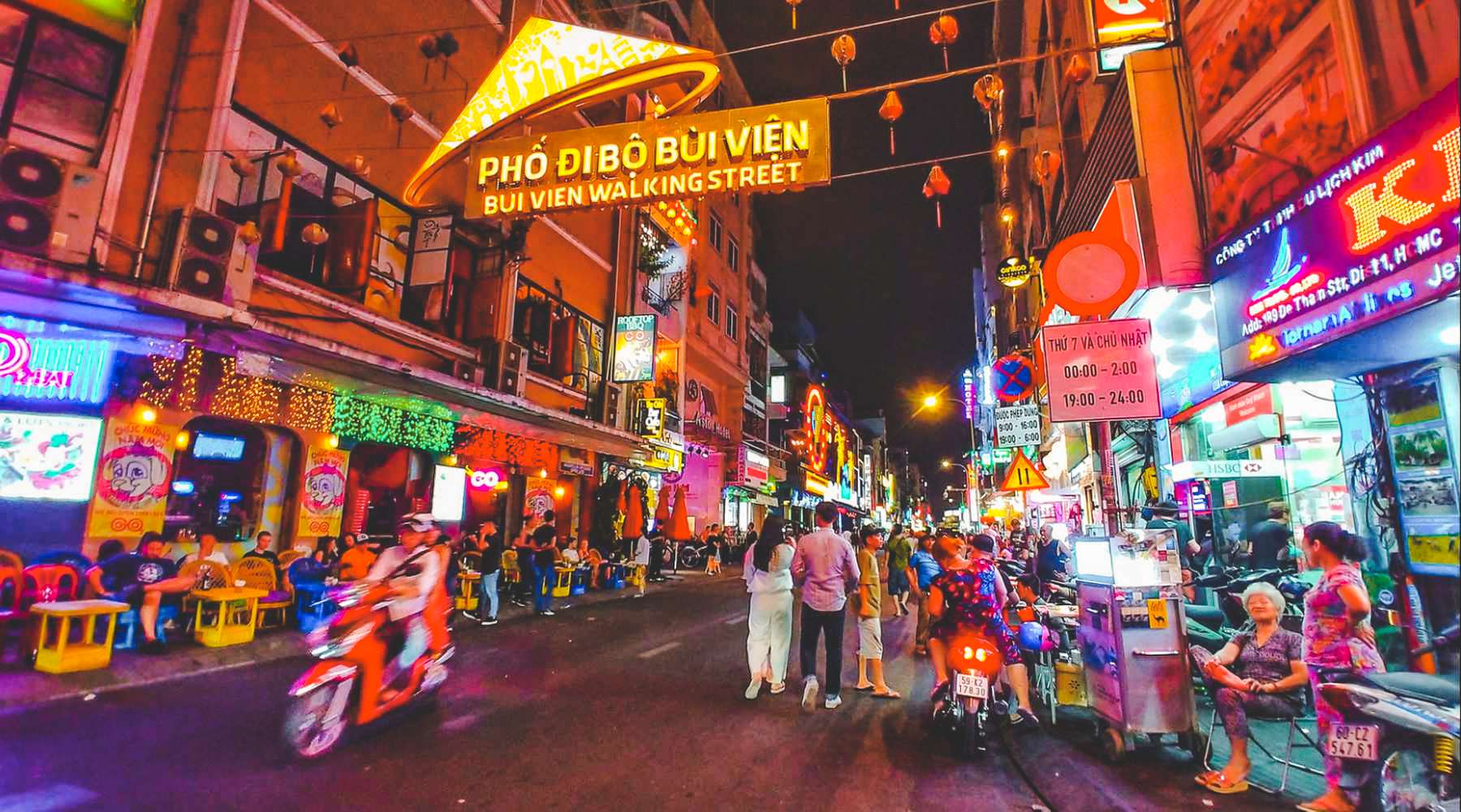
Photo: Collected
When it comes to the quintessence of tourist attractions and history keepers across Vietnam, Hanoi’s Old Quarter always wins as the first in the masses' hearts thanks to its historical background, unique hand-crafted gifts, and vivid daily life of Hanoian people. If you are unsure about how to explore this place of Vietnam to the fullest, this article is definitely for you!
1. Overview
Located around Hoan Kiem Lake to the West and North, 36 streets of the Old Quarter each had their own name derived from the 36 different professions and crafts that have existed for a hundred years. Nowadays, although only a handful of these streets are still selling the same products, there are a few avenues that still preserve the traditions of the past, and it can be enjoyable to delve into them by foot and take pictures.

Source: Collected
Foreigners can easily fall in love with Hàng Bạc (Silver Street) where artisans and craftsmen used to be in charge of creating luxurious items to serve the royals at the Thang Long Citadel, or Hàng Tre (Bamboo Street) with a bamboo tree is the symbol of Vietnamese people. Hàng Gai (Silk Street), was named for the pinkish dye that was once sold here, with shops now offering fabrics and tailor-made clothing. Hàng Mã (Decoration Street) is where locals go to buy religious items and festival decorations.
2. History of Hanoi’s Old Quarter
In the 17th century, King Ly Thai To made Hanoi the new capital of Vietnam, leading to a mass influx of skilled artisans and craftsmen from nearby regions in the 13th century. This resulted in the formation of at least 36 trade guilds in the 15th century, each of which had its own street named after the goods they specialized in.

Source: Collected
During the Nguyen Dynasty, under the pressure of taxation on street frontage, Vietnamese came up with a popular architectural style in the Old Quarter of Vietnam.
You can also see the French influence from the 19th and 20th centuries, especially from the yellow-coloured exteriors of the old villas, houses, and buildings, and the broad tree-lined boulevards heading into the Old Quarter. All of these elements come together in the modern high-rises and buildings of a growing Hanoi, making the Old Quarter an exciting destination to visit.
3. Key landmarks within the Old Quarter
3.1. Visit every ancient streets
Exploring the Old Quarter for the first time can be intimidating; with its never-ending motorcycles and tiny restaurants and shops. The best way to take in the sights is by hopping on a cyclo, a form of transportation that was used by the upper class in Hanoi.
Hàng Bạc is a treasure trove of precious stones, jewelry, and jade. On Hàng Gai, you'll discover a range of clothing items, from scarves to suits. Hàng Mã is a lively hub for toys, decorations, and paper lanterns, particularly vibrant during festivals. Luong Van Can street boasts vibrant souvenirs and toys for children, while Lan Ong, named after a renowned Vietnamese doctor, is your go-to for traditional medicine.

Source: Collected
For a market experience, Dong Xuan Market is Hanoi's equivalent of Saigon's Ben Thanh market and stands as the oldest traditional market in the capital.
3.2. Wander around Hoan Kiem Lake
Residents of Hanoi often invite each other to go for a walk around the lake, referring to Hoan Kiem Lake. Actually, a lot of international visitors are shocked by how active Vietnamese people are. Before dawn, you can see many joggers running along the lake's edges, while others practice tai chi, use public workout equipment, and play games of hacky-sack in groups.

Source: Collected
One activity that many locals enjoy is coming to relax by the lake, snacking on gỏi (salad), drinking tea, and catching up with their friends. Next time if you travel to Vietnam, let’s invite some friends to try this authentic Vietnamese experience.
3.3. Experience the vivid nightlife with locals
Within its 36 streets, there is something to please every visitor when night falls. Before the sun goes down, take the elevator up to the Diamond Sky Bar, where the beautiful views of the Old Quarter can be admired. If you're looking for a great cocktail, Polite Co. has a menu to choose from, while The Mad Botanist offers premium gin and tonics with a view of St. Joseph Cathedral.

Source: Collected
You can also visit Dong Xuan Market at night. It is a popular destination even at nighttime for locals to purchase a variety of goods, as well as traders to source their supplies. The whole market is illuminated with hundreds of lights from shops, restaurants, and street vendors.
3.4. Explore Vietnamese cuisine
The Old Quarter is brimming with specialty eateries and long-standing stalls. There are many options for foodies spanning from local delicacies to international dishes.

Source: Collected
- Bun Cha: Originating in Hanoi, this dish features vermicelli noodles topped with succulent BBQ pork belly slices and meatballs in a delectable broth, accompanied by a medley of fresh herbs.
- Cha Ca La Vong: Savor the grilled turmeric fish blended with dill and scallions, complemented by roasted peanuts, dipping sauce, and a side of noodles for a delightful culinary experience.
- Egg Coffee (cà phê trứng): Treat your taste buds to a unique coffee experience with a meringue-like mixture of beaten egg yolk and condensed milk, blended with rich robusta coffee.
- Nộm bò khô (Green papaya salad): A combination of beef jerky and papaya topped with crunchy peanuts.
- Chè (Vietnamese dessert): This type of dessert comes with a lot of kinds and ingredients such as beans, coconuts, and jelly.
3.5. Drink a beer at Ta Hien Street
Ta Hien Street is often described as a haven for night owls and beer enthusiasts. The beer on this street is widely renowned, making it no exaggeration to claim it as the ultimate spot to soak in the lively nightlife of Hanoi while savoring a refreshing beer. It is often accompanied by delectable fare such as roasted squid, fried fermented pork rolls, roasted bird, or sunflower seeds.

Source: Collected
When the heat of Hanoi becomes overwhelming, seize the opportunity to enjoy some beer and celebrate with friends in this locale! This unconventional setup provides visitors with a chance to immerse themselves in Hanoi's traditional and uncomplicated way of life.
4. Tips for foreigners
In conclusion, Vietnam in general and Hanoi’s Old Quarter in particular is certainly worth a trip which hopefully imprints the lasting impression on you.
If you have any questions relating to your Vietnam visa, please do not hesitate to contact us at +84.357.522.522 for detailed advice!